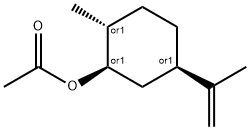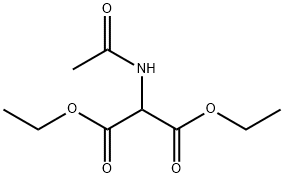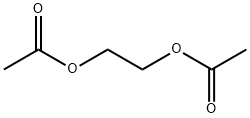Dimethylbenzylcarbinyl acetate
- CAS NO.:151-05-3
- Empirical Formula: C12H16O2
- Molecular Weight: 192.25
- MDL number: MFCD00026196
- EINECS: 205-781-3
- SAFETY DATA SHEET (SDS)
- Update Date: 2025-01-27 09:38:02

What is Dimethylbenzylcarbinyl acetate ?
Chemical properties
Dimethylbenzylcarbinyl acetate is a colorless liquid with a floral, woody odor. The ester is used in blossom compositions, for example, lily of the valley, rose, and geranium.
Chemical properties
α,α-Dimethylphenethyl acetate has a powerful floral, fruity odor
Occurrence
Has apparently not been reported to occur in nature.
Preparation
By acetylation of dimethylbenzyl carbinol.
Definition
ChEBI: 2-Methyl-1-phenyl-2-propanyl acetate is an alkylbenzene.
Flammability and Explosibility
Not classified
Safety Profile
Moderately toxic by ingestion. Askin irritant. When heated to decomposition it emits acridsmoke and irritating fumes.
Properties of Dimethylbenzylcarbinyl acetate
| Melting point: | 31.0 to 35.0 °C |
| Boiling point: | 250 °C (lit.) |
| Density | 0.998 g/mL at 25 °C (lit.) |
| vapor pressure | 1.9-2.9Pa at 20-25℃ |
| FEMA | 2392 | ALPHA,ALPHA-DIMETHYLPHENETHYL ACETATE |
| refractive index | n |
| Flash point: | 206 °F |
| storage temp. | -20°C |
| form | neat |
| Odor | at 100.00 %. sweet floral fruity rose green pear berry jasmin powdery |
| Water Solubility | 774.88mg/L at 20℃ |
| JECFA Number | 1655 |
| CAS DataBase Reference | 151-05-3(CAS DataBase Reference) |
| NIST Chemistry Reference | Benzeneethanol, «alpha»,«alpha»-dimethyl-, acetate(151-05-3) |
| EPA Substance Registry System | Dimethylbenzylcarbinyl acetate (151-05-3) |
Safety information for Dimethylbenzylcarbinyl acetate
| Signal word | Warning |
| Pictogram(s) |
 Exclamation Mark Irritant GHS07 |
| GHS Hazard Statements |
H315:Skin corrosion/irritation H319:Serious eye damage/eye irritation |
| Precautionary Statement Codes |
P264:Wash hands thoroughly after handling. P264:Wash skin thouroughly after handling. P280:Wear protective gloves/protective clothing/eye protection/face protection. P305+P351+P338:IF IN EYES: Rinse cautiously with water for several minutes. Remove contact lenses, if present and easy to do. Continuerinsing. |
Computed Descriptors for Dimethylbenzylcarbinyl acetate
Dimethylbenzylcarbinyl acetate manufacturer
New Products
Methyl (R)-1-Boc-4,4-difluoropyrrolidine-2-carboxylate 2,2-Difluoropropylamine hydrochloride tert-butyl 3-bromoazetidine-1-carboxylate (R)-1-Boc-3-hydroxypyrrolidine DIFLUOROACETIC ANHYDRIDE 2,2-Difluoropropionic acid Diallylamine, 99% Calcium hydroxide, 95% Aluminum oxide, basic 2-Bromophenylacetonitrile, 97% L-tert-Leucine,97% N-Hydroxy-2-methylpropanimidamide 4-(3,4-Dichlorophenyl)-3,4-Dihydro-N-Methyl-1-(2H)-Naphthalenimine (Schiff Base) 2-AMINO-3,5-DIBROMO BENZALDEHYDE [ADBA] L-Glutamic Acid Dimethyl Ester Hcl 10-Methoxy-5H-dibenz[b,f]azepine 5-Cyanophthalide N, N-Carbonyldiimidazole (CDI) Dibenzoyl Peroxide Titanium Dioxide 2-(Methylthio) Benzonitrile Sodium Acetate Anhydrous Allopurinol 1,5-DibromopentaneRelated products of tetrahydrofuran








You may like
-
 151-05-3 Dimethylbenzylcarbinyl acetate 98%View Details
151-05-3 Dimethylbenzylcarbinyl acetate 98%View Details
151-05-3 -
 151-05-3 98%View Details
151-05-3 98%View Details
151-05-3 -
 Dimethylbenzylcarbinyl acetate 99%View Details
Dimethylbenzylcarbinyl acetate 99%View Details
151-05-3 -
 Ethyl-2-Chloroacetoacetate 609-15-4View Details
Ethyl-2-Chloroacetoacetate 609-15-4View Details
609-15-4 -
 CIS- BROMO BENZOATEView Details
CIS- BROMO BENZOATEView Details
61397-56-6 -
 609-15-4View Details
609-15-4View Details
609-15-4 -
![1-(6-Methylpyridin-3-Yl)-2-[4-(Methylsulfonyl)Phenyl]Ethanone [Ketosulfone] 99%](https://img.chemicalbook.in//Content/image/CP5.jpg) 1-(6-Methylpyridin-3-Yl)-2-[4-(Methylsulfonyl)Phenyl]Ethanone [Ketosulfone] 99%View Details
1-(6-Methylpyridin-3-Yl)-2-[4-(Methylsulfonyl)Phenyl]Ethanone [Ketosulfone] 99%View Details
221615-75-4 -
 27143-07-3View Details
27143-07-3View Details
27143-07-3
Statement: All products displayed on this website are only used for non medical purposes such as industrial applications or scientific research, and cannot be used for clinical diagnosis or treatment of humans or animals. They are not medicinal or edible.
